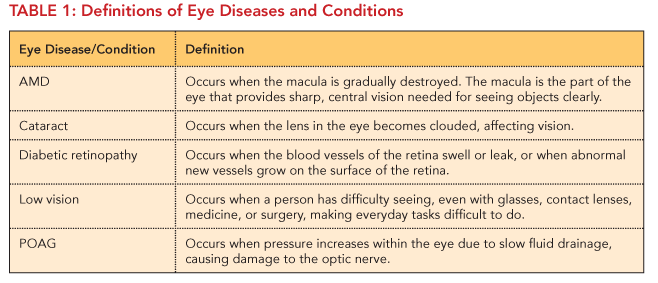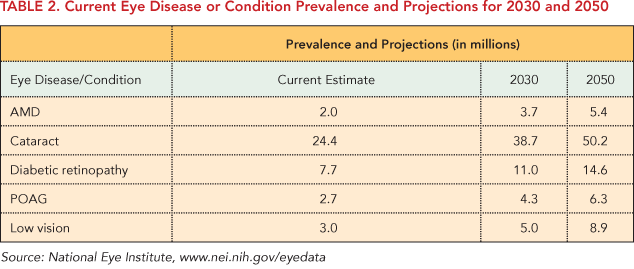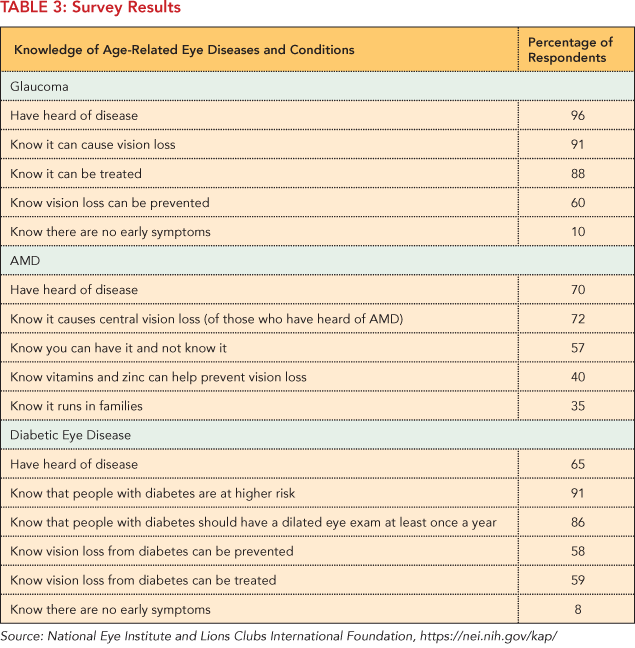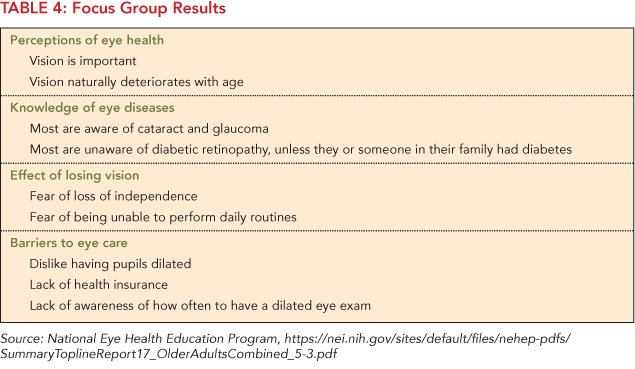What Caregivers Need To Know About Aging Eyes
Exams for early detection of diseases afflicting the eyes are imperative to reducing unnecessary vision loss.
Neyal J. Ammary-Risch
7/1/2016
With the aging of the baby boomer generation, the growing prevalence of eye diseases and vision loss has become a major public health concern. As such, directors of skilled nursing care, assisted living, and rehabilitation centers need to be equipped with science-based information to educate and train staff on key eye health issues affecting their residents and patients.

This article discusses the most common age-related eye diseases and conditions and their prevalence rates, as well as older adults’ knowledge about eye diseases, and ways to prevent vision loss and blindness.
Free educational resources tailored to people who care for older adults are available from the National Eye Institute’s (NEI’s) National Eye Health Education Program.
Age-Related Eye Diseases, Conditions, And Their Prevalence
As people age, normal functions of the eye often decline and the risk of developing eye diseases increases. The most common age-related eye diseases and conditions (defined in Table 1) are age-related macular degeneration (AMD), cataract, diabetic retinopathy, low vision, and primary open-angle glaucoma (POAG).
Left untreated, these conditions can cause vision loss and blindness, resulting in significant disability and diminished quality of life for millions of people.
NEI, which is part of the National Institutes of Health, estimates that 2 million adults ages 40 and over have AMD, 24.4 million have cataract, 7.7 million have diabetic retinopathy, 2.7 million have POAG, and 3 million have low vision. These rates are expected to increase as the number of older adults grows. Table 2 displays the projections for these eye diseases and conditions for 2030 and 2050.

Eye Health Among Older Adults In The U.S.
Many people think that vision loss is a normal part of the aging process. Although changes to the eyes and vision do naturally occur with age, losing vision or going blind is not a normal part of aging.
To help determine how to best raise awareness about age-related eye diseases and the important role that comprehensive dilated eye exams play in their early detection, NEI conducted a national survey of 3,180 people about their knowledge, attitudes, and practices related to eye health and diseases.

This survey revealed that older Americans place high importance on their vision: Seven out of 10 respondents said losing vision has greater impact than losing memory, hearing, or a limb. Although a majority of respondents had heard about a particular eye disease, only 10 percent or fewer knew that the disease had no early symptoms (see Table 3).
NEI also conducted focus groups with adults ages 40 to 59 and ages 60 and older across the United States to gain a deeper understanding of the knowledge gaps regarding eye health and disease (see Table 4).
Preventing Vision Loss And Blindness
Visual impairment and blindness resulting from these diseases can often be prevented with early detection, treatment, and appropriate follow-up care. To help prevent vision loss, it is critical for older adults to make comprehensive dilated eye exams a routine part of their health care, because many age-related eye diseases are asymptomatic in their early, more treatable stages. Primary care physicians play a pivotal role in reminding their patients to get these exams.
When vision improvement is not possible from a medical standpoint, people with low vision can make the most of their remaining sight with vision rehabilitation. Vision rehabilitation services include occupational and mobility training, training in the use of assistive devices, and counseling. These services help people with vision loss maintain their independence and quality of life. It is important for health and social service providers to refer patients to vision rehabilitation services.

Eye health often does not become a priority for many people until they begin to lose vision from an eye disease or condition. Because vision loss can often be prevented with early detection and treatment, there is a critical need to inform older adults about the importance of regular comprehensive dilated eye exams, as well as other lifestyle factors that can influence the health of their eyes.
 Neyal J. Ammary-Risch, MPH, MCHES, is director of the National Eye Health Education Program of the National Eye Institute, with the National Institutes of Health, Bethesda, Md. She can be reached at ammaryn@nei.nih.gov.
Neyal J. Ammary-Risch, MPH, MCHES, is director of the National Eye Health Education Program of the National Eye Institute, with the National Institutes of Health, Bethesda, Md. She can be reached at ammaryn@nei.nih.gov.